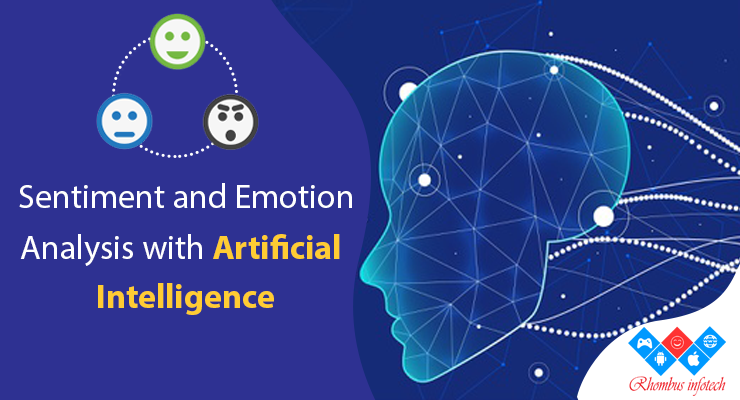Role of sensing emotional sentiments in artificial intelligence plays a very crucial part to deal with human sentimental feelings with the help of robotic devices. These super intelligent devices give the feelings of various emotions with different facial expressions and voices.
Human emotions have a long evolutionary purpose for our survival as a species. They are either a reaction to an external stimulus, or a spontaneous expression of an internal thought process. Emotions like fear are often a reaction to an external stimulus, such as when we cross a busy road the fear of getting run-over causes our evolutionary survival mechanism to take effect. These are external causes that trigger the emotions inside our brain. However, emotions can be invoked as the result of an internal thought process. For example, If I managed to find a solution to a complicated mathematical differential equation, that could make me happy as a result of a feeling of personal satisfaction. It may be a purely introspective action with no external cause, but solving it still triggers emotions.
So in the same way, AI engineers could simulate this emotion from the machines internal logic. Furthermore, simulating emotions triggered from external stimuli like joy, sadness, surprise, disappointment, fear, and anger could be invoked with interactions through written language, sensors, and so on. Computational methods would then be required for the processing and expression of emotions that occurs with human interaction. Without emotions we would not have survived as a species and our intelligence has improved as a result of our emotions. Furthermore, we cannot detach our emotions from the way in which we apply our intelligence. For example, a doctor may decide on what medical grounds that the best treatment option for a very elderly hospital patient would be a surgical procedure. However, the doctor’s emotional empathy with the patient might override this view. Taking the age of the patient into account, he or she may decide that the emotional stress likely to be incurred by the patient is not worth the risk of the operation – and therefore, rule it out. Emotional intelligence, as well as technical knowledge, is used to decide the treatment options. Of course, machines could never feel emotions akin to us humans. Nevertheless, they could simulate emotions that enable them to interact with humans in more appropriate ways.
The ability to generate natural-sounding speech has long been a challenge for AI programs that transform text into spoken words. As a intelligent personal assistants like Siri (Apples natural language understanding program for the iPhone), Alexa (Amazon’s virtual personal assistant), and Google Assistant (mentioned earlier) all use text-to-speech software to create a more convenient interface with their users. These systems work by forging together words and phrases from prerecorded files of one particular voice. Switching to a different voice—such as having Alexa sound like a boy—requires a new audio file containing every possible word the device might need to communicate with users.
AI has improved significantly at detecting emotions in humans through voice, body language, facial expressions, and so on. For example, voice recognition AI software systems, are learning to detect human emotions through speech intonation, speech pauses, and so on, in much the same way that we detect changes in emotional moods of our loved ones, friends, or work colleagues. Now AI engineers have developed a deep learning AI program that can tell whether a person is a criminal just by looking at their facial features with an accuracy rate of 90%.
Prospective future of AI based sentiments & emotions
There are several potential benefits of using AI programs to detect human emotions. Artificial intelligence has become a mainstream increasingly being used in many different innovative ways by smart robotic machines. Emotional Artificial Intelligence has already become quite widespread across industries. Systems that can detect both the facial expressions as well as the vocal cues of humans are being employed to detect and handle emotional input in various sectors like customer service, training, healthcare, and financial interactions, as well as education. Though we’ve definitely not reached the stage where human agents would be replaced by machines, we’re now seeing an increasing degree of support tools that are aiding in enhancing these interactions.

